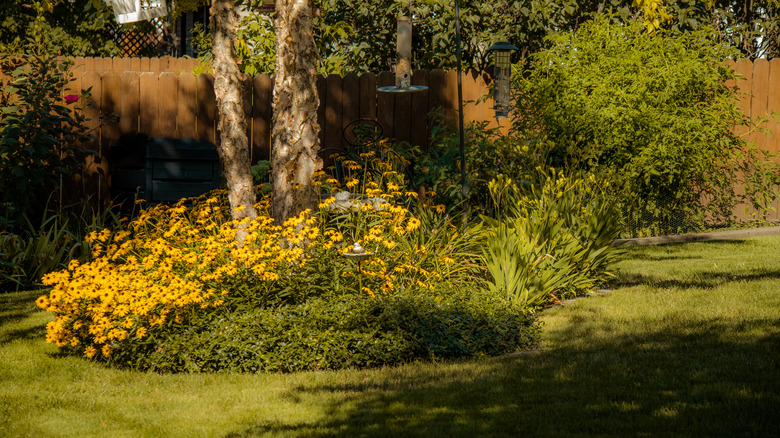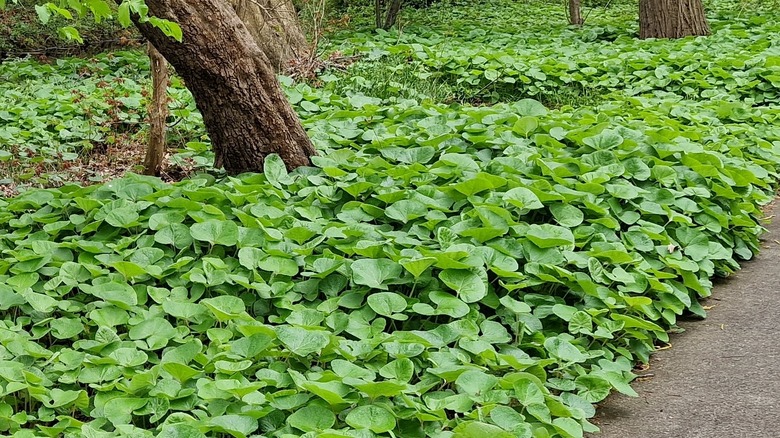The Native Green Ground Cover That's Perfect For Shady Areas Of Your Yard & Garden
Bright light is a main growing condition many plants need to thrive, with some species refusing to grow without at least six hours of direct sunlight. But, if your outdoor space is a blanket of cool shade, you're not out of luck. You can still grow a flourishing garden with ground cover plants that love shade, and wild ginger (Asarum canadense) is the perfect plant to start with. This native ground cover is easy to care for, and with large, heart-shaped evergreen leaves, it's ideal for subtle flair.
Wild ginger grows in part- to full-shade, with less than two hours of sunlight being enough for its growth. It is ideal for ground cover underneath shady tree canopies, as a border near fences, or ornamental foliage in other areas that receive little sunlight, if any at all. You might also see this ground cover referred to as Canadian wild ginger, but don't let that confuse you. Despite the name, it is also native to the United States; the evergreen just also has dual citizenship in northeastern Canada.
How to care for wild ginger
Wild ginger is a low maintenance plant that is hardy in USDA zones 4 to 8 and can be grown from seed or seedling. It has a moderate growth rate, so you don't have to worry about the foliage taking over your yard if you plant it around trees and fences. Wild ginger prefers well-drained, rich, acidic soil. Unless there's a drought, the rainfall should cover all this plant's watering needs. Wild ginger can tolerate damp soil, so it doesn't hurt to water the evergreen when the ground is dry. Of course, don't forget about the shade. Severe hot, humid weather can hamper the plant's growth and cause the leaves to burn. If your shady garden suddenly becomes sunny, be sure to shield your ground cover from excess sunlight.
Wild ginger's heart-shaped leaves are a great way to add texture and depth to your garden without colorful flowers, climbing vines, or tall hedges. Although the foliage is the big draw, wild ginger also sprouts purplish-brown flowers in the spring, which bloom close to the ground and are usually hidden by the leaves. To add another layer of beauty with flowers you can see, try growing other pretty plants that thrive without direct sunlight along with your wild ginger.

